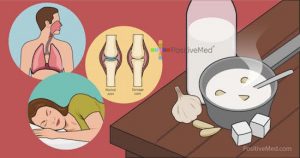
Body Language, Why It Matters
By Andres Carvajal- Costa Rica Team
Edited by Stephanie Dawson
How your body reacts and speaks for you can be more important than the words you say. If someone is saying he is happy but is frowning all time, would you believe him? Body language is the solution to interpreting a person feelings and intentions. Facial gestures, hand gestures, eye movements, position of the body, posture, feet movements, all are expressing cues, signs of your inner states and intentions, maybe even you don’t know what is your body is really saying. There are universal emotions that any human can recognize, our brain is designed to interpret emotions in other human beings, those emotions include anger, happiness, and sadness, the basic emotions. All emotions have a manifestation in our body.
The clue to mastering body language expression goes includes recognizing the different expressions of body language. To become a reader of language signs you should know in which context we are going to use it and for what purpose: romantic, the art of identifying and demonstrating interest and love in others with our own body language, or professional, the art of identifying and representing a trustworthy, honest, and loyal attitude at work. Those are only two areas where body language is extensively used, however body language is at work in all interpersonal contact, functioning as an honest sign of your inner state and intentions and complementing the messages you are trying to express.
This article will focus on some aspects, like how to identify and use some common body language expressions, so you can use and acknowledge them consciously in your everyday interactions.
• Posture– You may remember your parents and school teachers telling you to sit up straight. Good posture does matter, it is an overall sign of good health and youthfulness and can make the difference between a good and a bad impression. Head straight and high, shoulders leveled and back, chest out, breathing is paused and deep, space between arms equal and feet at shoulder width. You can do a mental scan of your body to check how good your posture is. Is your head straight, or bent? Are your shoulders under stress? Is your back straight? Keep on scanning your overall posture throughout the day and you might see a difference in the way you use your body, you’ll find a more efficient way to move and express yourself.
• Universal facial expressions– There are some universal facial expressions that are articulated and recognized in every human, no matter the cultural context and age. These facial expressions are correlates of basic human emotions, which are fundamental to human communication. These emotions are quickly interpreted by anyone: anger, fear, surprise, happiness, disgust, and sadness. Every human group has its own manifestation and code for these emotions, and they are clearly very easy to read in someone else’s face.

• Eyes– Making eye contact is important to the person you are communicating with, too much eye contact can be seen as aggressive, while not enough can be a sign of boredom or lack of interest. Rubbing the eyes can be interpreted as a sign of disbelief, boredom, upset, or tiredness. Widening eyes is seen as a sign of interest or surprise. Blinking is a reflex of the eye that can be trained to express emotions, it is said that women blink twice as much as men and it can be used as a sign of recognition, it can also be a sign of excitement or pressure. Eyebrow rising is usually a sign of recognition, to acknowledge someone or something, or to register surprise or disbelief. If you look down too often when you talking with somebody it can be a sign of disinterest or anxiety. Try to keep eye contact with the person, noticing the surroundings, and keeping the distance according to the context, romantic, interpersonal, or professional.
• Mouth– This is mostly related to smiling. It is said that our brains know how to recognize a spontaneous smile and a fake smile. A fake smile lasts longer than spontaneous, and is only mouth movements, while spontaneous smiles are a movement of all face muscles, including eyes. Genuine and spontaneous smiling is a sign of relaxation and of feeling at ease. There is also the case of forced laughter, probably a sign of nervousness and an effort to achieve empathy. Chewing gum, biting the lips, or grinding teeth with excessive pressure on jaws are all signs of stress and tension. The mouth is often used to relieve tension, for example while eating, smoking, sucking thumbs, or biting nails are all forms of relieving tension or anxiety.
• Head– The position and movements of the head are an important ally in making yourself clear. Nodding is a sign of agreement, a fast nod can be a sign of over agreement or impatience, while a slower nod is a sign of listening carefully and paying attention. The position of the chin says a lot about confidence, a high chin shows confidence while a low chin is a sign of being uncomfortable or of anxiety. Shaking the head is a commonly used sign of disagreement.
• Arms and hands– Arms can act as a barrier or as a show of openness. Crossed arms are a common sign of closeness, anxiety, or nervousness, when it is accompanied by closed fists or movements of the hands it may indicate nervousness. The hands are one of the body parts we pay more attention to. The position of the hands in a particular zone might indicate different signs, hands in pocket, hands on head, and movement like scratching or signaling. The interpretation of hands movements will be the core of a second article in how to interpret hand movements and positions.
• Legs and feet– Some of the body parts that are very difficult to consciously modify. The position of the knees and feet expresses to whom the attention is directed, open legs might point to confidence or $e*u@l openness. These positions are not commonly used by women, especially when wearing a skirt. Crossed legs while seated can be a sign of interest or disinterest. Splayed legs, or a wide stance while standing, is a sign of confidence.
The greater awareness you have, the greater control you’ll have over your body language. Keep mentally scanning the position of hands, legs, feet, and posture, and try to see body language as a choice, not a reflex of your emotions. Controlling your body language consciously will impact positively the people around you and make your messages more direct. Keep in mind that spontaneity can get along well with consciousness of your body. Awareness of body language will make you a more flexible and powerful person.
Sources:
The Definitive Book of Body Language (Hardcover) by Allan Pease
Body Language: How to Read Others’ Thoughts by Their Gestures by Allan Pease





